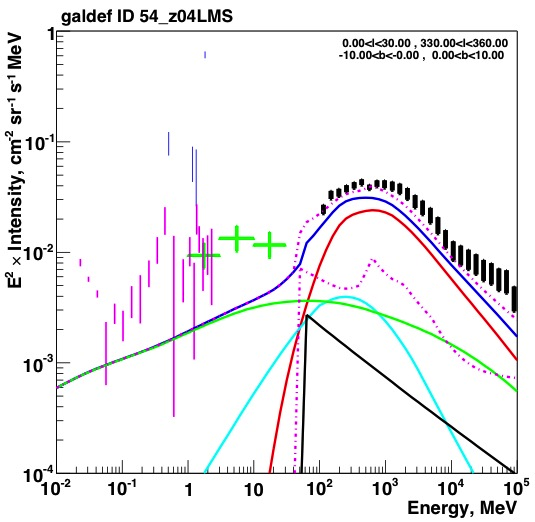MeV astronomy of the high-energy interstellar medium
The MeV photon energy range is critical to understanding interstellar radiation from cosmic-ray interactions. Since it is below the pion-decay range, it is free from the hadronic component, and is instead sensitive to bremsstrahlung and inverse-Compton emission from cosmic-ray electrons and positrons. Inverse Compton emission dominates down to about 100 keV, as has been shown using INTEGRAL SPI data. In the MeV region, the only available data are from COMPTEL, which show an apparent excess over the expectation from interstellar processes, possibly due to populations of unresolved point sources. The leptonic component is relevant also to the Galactic synchrotron radiation, which is a foreground for CMB studies by Planck as well as being of great intrinsic interest. Recent determinations of the ionization rate of clouds using chemistry indicate a high level due to MeV protons: this has consequences for the expected nuclear excitation lines and star formation. The Fermi Bubbles are enormous structures at GeV energies, and their origin will be better revealed with MeV observations due to their probably leptonic nature. Fermi-LAT may be extended down to at most 20 MeV, with limited angular and energy resolution, and a complementary sky survey with comparable sensitivity below this energy is essential for the astrophysical interpretation.
Required instrument performances:
Complete sky coverage is essential for large-scale diffuse emission, so that a large FWHM is desirable. The sensitivity must be sufficient to complement Fermi (>50 MeV) and not more than a factor 10 worse for 0.1-30 MeV. The values given are based on an improvement of 10-100 over COMPTEL and SPI.
 Spectrum of the inner Galaxy with data from INTEGRAL/SPI (magenta and blue vertical bars), COMPTEL (green crosses) and Fermi-LAT (black vertical bars). Lines show the components of model; red: pion-decay, green: inverse Compton, cyan: Bremsstrahlung, black: extra-galactic / isotropic, blue: total without sources, magenta dashed: Fermi-detected sources and total including sources. The model below 100 MeV does not include positronium, line emission or point sources. Credit: A. Strong. |
Required instrument performances:
Complete sky coverage is essential for large-scale diffuse emission, so that a large FWHM is desirable. The sensitivity must be sufficient to complement Fermi (>50 MeV) and not more than a factor 10 worse for 0.1-30 MeV. The values given are based on an improvement of 10-100 over COMPTEL and SPI.
| Performance parameter | Goal value | Remarks and notes |
|
Field-of-view (FWHM, deg) |
p | Need to cover whole sky (4p) but this is not a FWHM. Can be built up from many observations, even in case of a narrow field instrument. But a wide field is better for this goal. |
|
Angular resolution (FWHM, deg) |
1o | |
|
Spectral resolution (ΔE/E @ Energy) |
10 % | Need to resolve positronium which is a competing process in the 200-500 keV range and must be distinguished from non-thermal emission. |
|
Line sensitivity (@ Energy) (cm-2 s-1, 3σ, 1 Ms) |
- | |
|
Continuum sensitivity (in which energy band?) (cm-2 s-1 keV-1 sr -1, ΔE=E, 3σ, 1 Ms) |
10-6 – 10-7 |
Units are intensity (sr-1), appropriate to extended emission. This is 10-100 better than SPI, COMPTEL. |
| Timing performances | - | |
|
Polarimetric capability (Minimum Polarization Fraction for a Crab source in 1 Ms) |
- |
|
| Real-time data? | - |
 AstroMeV
AstroMeV